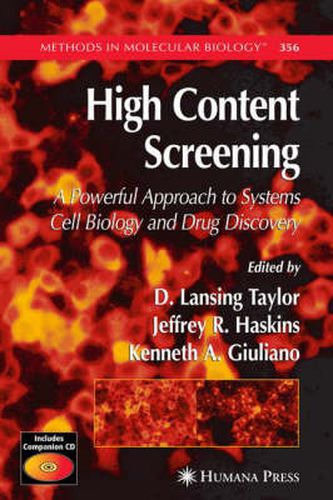Readings Newsletter
Become a Readings Member to make your shopping experience even easier.
Sign in or sign up for free!
You’re not far away from qualifying for FREE standard shipping within Australia
You’ve qualified for FREE standard shipping within Australia
The cart is loading…






This title is printed to order. This book may have been self-published. If so, we cannot guarantee the quality of the content. In the main most books will have gone through the editing process however some may not. We therefore suggest that you be aware of this before ordering this book. If in doubt check either the author or publisher’s details as we are unable to accept any returns unless they are faulty. Please contact us if you have any questions.
There has always been some tension between proponents of hypothesis-driven and discovery-driven research in the broad field of life sciences. Academic research has been primarily focused on hypothesis-driven research. However, the success of the human genome project, a discovery-driven research approach, has opened the door to adding other types of discovery-driven research to a continuum of research approaches. In contrast, drug discovery research in the pharmaceutical industry has embraced discovery-driven research for many years. A good example has been the discovery of active compounds from large chemical libraries, through screening campaigns. The success of the human genome project has also demonstrated the need for both academic researchers and industrial researchers to now understand the functions of genes and gene products. The cell is the basic unit of life and it has been at the cellular level where function can be demonstrated most cost-effectively and rapidly. High content screening (HCS) was developed by Cellomics Inc. in the mid-1990s to address the need for a platform that could be used in the discovery-driven research and development required to understand the functions of genes and gene products at the level of the cell.
$9.00 standard shipping within Australia
FREE standard shipping within Australia for orders over $100.00
Express & International shipping calculated at checkout
This title is printed to order. This book may have been self-published. If so, we cannot guarantee the quality of the content. In the main most books will have gone through the editing process however some may not. We therefore suggest that you be aware of this before ordering this book. If in doubt check either the author or publisher’s details as we are unable to accept any returns unless they are faulty. Please contact us if you have any questions.
There has always been some tension between proponents of hypothesis-driven and discovery-driven research in the broad field of life sciences. Academic research has been primarily focused on hypothesis-driven research. However, the success of the human genome project, a discovery-driven research approach, has opened the door to adding other types of discovery-driven research to a continuum of research approaches. In contrast, drug discovery research in the pharmaceutical industry has embraced discovery-driven research for many years. A good example has been the discovery of active compounds from large chemical libraries, through screening campaigns. The success of the human genome project has also demonstrated the need for both academic researchers and industrial researchers to now understand the functions of genes and gene products. The cell is the basic unit of life and it has been at the cellular level where function can be demonstrated most cost-effectively and rapidly. High content screening (HCS) was developed by Cellomics Inc. in the mid-1990s to address the need for a platform that could be used in the discovery-driven research and development required to understand the functions of genes and gene products at the level of the cell.